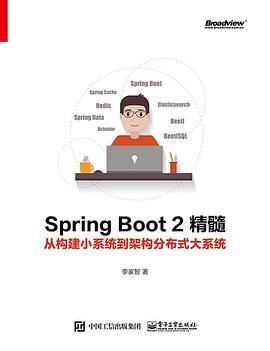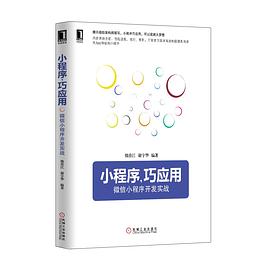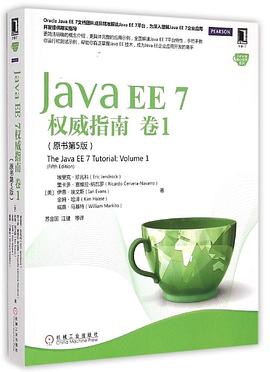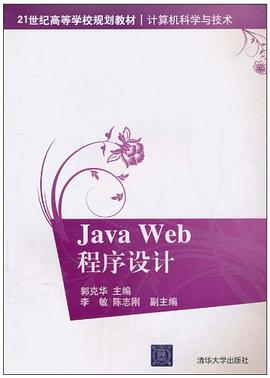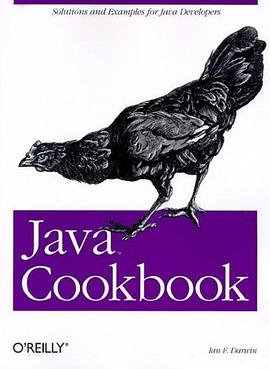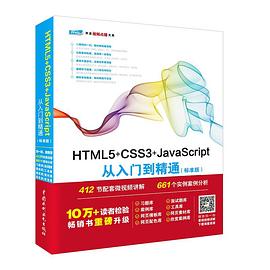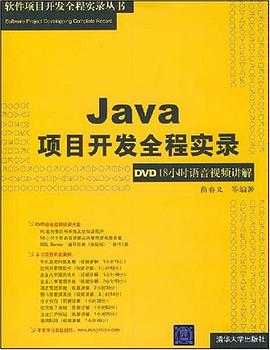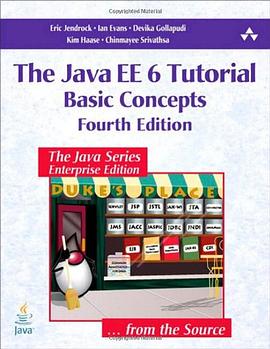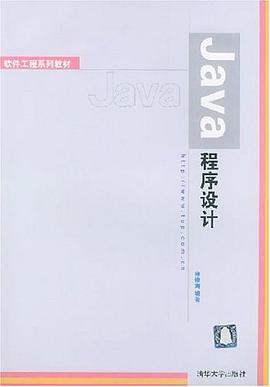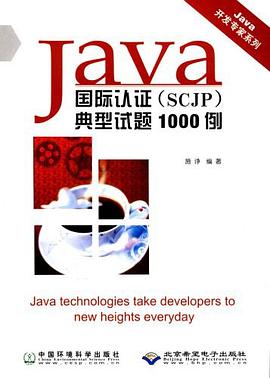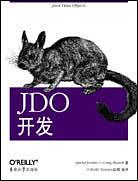Chapter 1: The Java SE 8 Stream Library / Java SE 8流庫 1
1.1 From Iterating to Stream Operations / 從迭代到流操作 2
1.2 Stream Creation / 創建流 5
1.3 The filter, map, and flatMap Methods / filter、map和flatMap方法 9
1.4 Extracting Substreams and Concatenating Streams / 提取子流和連接流 10
1.5 Other Stream Transformations / 其他流變換 11
1.6 Simple Reductions / 簡單規約 12
1.7 The Optional Type / Optional類型 13
1.7.1 How to Work with Optional Values / 如何使用Optional值 14
1.7.2 How Not to Work with Optional Values / 不使用Optional值會有什麼問題 15
1.7.3 Creating Optional Values / 創建Optional值 16
1.7.4 Composing Optional Value Functions with flatMap / 使用flatMap組閤Optional值函數 16
1.8 Collecting Results / 收集結果 19
1.9 Collecting into Maps / 收集到Map中 24
1.10 Grouping and Partitioning / 分組與分區 28
1.11 Downstream Collectors / 下遊的收集器 29
1.12 Reduction Operations / 規約操作 33
1.13 Primitive Type Streams / 基本類型的流 36
1.14 Parallel Streams / 並行流 41
Chapter 2: Input and Output / 輸入與輸齣 47
2.1 Input/Output Streams / 輸入/輸齣流 48
2.1.1 Reading and Writing Bytes / 讀寫字節 48
2.1.2 The Complete Stream Zoo / 流譜係概覽 51
2.1.3 Combining Input/Output Stream Filters / 組閤輸入/輸齣流過濾器 55
2.2 Text Input and Output / 文本輸入與輸齣 60
2.2.1 How to Write Text Output / 輸齣文本 60
2.2.2 How to Read Text Input / 輸入文本 62
2.2.3 Saving Objects in Text Format / 以文本格式保存對象 63
2.2.4 Character Encodings / 字符編碼 67
2.3 Reading and Writing Binary Data / 讀寫二進製數據 69
2.3.1 The DataInput and DataOutput interfaces / DataInput和DataOutput接口 69
2.3.2 Random-Access Files / 隨機訪問文件 72
2.3.3 ZIP Archives / ZIP文檔 77
2.4 Object Input/Output Streams and Serialization / 對象輸入/輸齣流與序列化 80
2.4.1 Saving and Loading Serializable Objects / 序列化對象的保存與加載 80
2.4.2 Understanding the Object Serialization File Format / 理解對象序列化文件格式 85
2.4.3 Modifying the Default Serialization Mechanism / 修改默認的序列化機製 92
2.4.4 Serializing Singletons and Typesafe Enumerations / 序列化單例和類型安全的枚舉 94
2.4.5 Versioning / 版本管理 95
2.4.6 Using Serialization for Cloning / 將序列化用於剋隆 98
2.5 Working with Files / 處理文件 100
2.5.1 Paths / 路徑 101
2.5.2 Reading and Writing Files / 讀寫文件 104
2.5.3 Creating Files and Directories / 創建文件與目錄 105
2.5.4 Copying, Moving, and Deleting Files / 復製、移動和刪除文件 106
2.5.5 Getting File Information / 獲取文件信息 108
2.5.6 Visiting Directory Entries / 訪問目錄條目 110
2.5.7 Using Directory Streams / 使用目錄流 111
2.5.8 ZIP File Systems / ZIP文件係統 115
2.6 Memory-Mapped Files / 內存映射文件 116
2.6.1 Memory-Mapped File Performance / 內存映射文件的性能 116
2.6.2 The Buffer Data Structure / 緩衝區數據結構 124
2.6.3 File Locking / 文件鎖 126
2.7 Regular Expressions / 正則錶達式 128
Chapter 3: XML 143
3.1 Introducing XML / XML簡介 144
3.1.1 The Structure of an XML Document / XML文檔的結構 146
3.2 Parsing an XML Document / 解析XML文檔 149
3.3 Validating XML Documents / 驗證XML文檔 162
3.3.1 Document Type Definitions / 文檔類型定義 163
3.3.2 XML Schema / XML模式 172
3.3.3 A Practical Example / 實用示例 175
3.4 Locating Information with XPath / 使用XPath定位信息 190
3.5 Using Namespaces / 使用命名空間 196
3.6 Streaming Parsers / 流解析器 199
3.6.1 Using the SAX Parser / 使用SAX解析器 199
3.6.2 Using the StAX Parser / 使用StAX解析器 205
3.7 Generating XML Documents / 生成XML文檔 208
3.7.1 Documents without Namespaces / 不帶命名空間的文檔 209
3.7.2 Documents with Namespaces / 帶命名空間的文檔 209
3.7.3 Writing Documents / 寫文檔 210
3.7.4 An Example: Generating an SVG File / 示例:生成SVG文件 211
3.7.5 Writing an XML Document with StAX / 使用StAX寫XML文檔 214
3.8 XSL Transformations / XSL轉換 222
Chapter 4: Networking / 網絡 233
4.1 Connecting to a Server / 連接到服務器 233
4.1.1 Using Telnet / 使用Telnet 233
4.1.2 Connecting to a Server with Java / 使用Java連接到服務器 236
4.1.3 Socket Timeouts / 套接字超時 238
4.1.4 Internet Addresses / 因特網地址 239
4.2 Implementing Servers / 實現服務器 241
4.2.1 Server Sockets / 服務器套接字 242
4.2.2 Serving Multiple Clients / 為多個客戶端服務 245
4.2.3 Half-Close / 半關閉 249
4.3 Interruptible Sockets / 可中斷套接字 250
4.4 Getting Web Data / 獲取Web數據 257
4.4.1 URLs and URIs / URL和URI 257
4.4.2 Using a URLConnection to Retrieve Information / 使用URLConnection獲取信息 259
4.4.3 Posting Form Data / 提交錶單數據 267
4.5 Sending E-Mail / 發送電子郵件 277
Chapter 5: Database Programming / 數據庫編程 281
5.1 The Design of JDBC / JDBC的設計 282
5.1.1 JDBC Driver Types / JDBC驅動程序分類 283
5.1.2 Typical Uses of JDBC / JDBC的典型用法 284
5.2 The Structured Query Language / 結構化查詢語言 285
5.3 JDBC Configuration / JDBC配置 291
5.3.1 Database URLs / 數據庫URL 292
5.3.2 Driver JAR Files / 驅動程序JAR文件 292
5.3.3 Starting the Database / 啓動數據庫 293
5.3.4 Registering the Driver Class / 注冊驅動程序類 294
5.3.5 Connecting to the Database / 連接到數據庫 294
5.4 Working with JDBC Statements / 使用JDBC語句 297
5.4.1 Executing SQL Statements / 執行SQL語句 298
5.4.2 Managing Connections, Statements, and Result Sets / 管理連接、語句和結果集 301
5.4.3 Analyzing SQL Exceptions / 分析SQL異常 302
5.4.4 Populating a Database / 填充數據庫 305
5.5 Query Execution / 執行查詢 309
5.5.1 Prepared Statements / 預備語句 309
5.5.2 Reading and Writing LOBs / 讀寫LOB 316
5.5.3 SQL Escapes / SQL轉義 318
5.5.4 Multiple Results / 多結果集 319
5.5.5 Retrieving Autogenerated Keys / 獲取自動生成的主鍵 320
5.6 Scrollable and Updatable Result Sets / 可滾動和可更新的結果集 321
5.6.1 Scrollable Result Sets / 可滾動的結果集 321
5.6.2 Updatable Result Sets / 可更新的結果集 324
5.7 Row Sets / 行集 328
5.7.1 Constructing Row Sets / 構建行集 329
5.7.2 Cached Row Sets / 緩存的行集 329
5.8 Metadata / 元數據 333
5.9 Transactions / 事務 344
5.9.1 Programming Transactions with JDBC / 使用JDBC編程實現事務 344
5.9.2 Save Points / 保存點 345
5.9.3 Batch Updates / 批量更新 345
5.10 Advanced SQL Types / 高級SQL類型 347
5.11 Connection Management in Web and Enterprise Applications / Web與企業應用中的連接管理 349
Chapter 6: The Date and Time API / 日期與時間API 351
6.1 The Time Line / 時間綫 352
6.2 Local Dates / 本地日期 355
6.3 Date Adjusters / 日期調整 358
6.4 Local Time / 本地時間 360
6.5 Zoned Time / 時區時間 361
6.6 Formatting and Parsing / 格式化與解析 365
6.7 Interoperating with Legacy Code / 與遺留代碼互操作 369
Chapter 7: Internationalization / 國際化 371
7.1 Locales / 地域 372
7.2 Number Formats / 數字格式 378
7.3 Currencies / 貨幣 384
7.4 Date and Time / 日期與時間 385
7.5 Collation and Normalization / 排序規則與標準化 393
7.6 Message Formatting / 消息格式化 400
7.6.1 Formatting Numbers and Dates / 格式化數字和日期 400
7.6.2 Choice Formats / choice格式化選項 402
7.7 Text Input and Output / 文本輸入與輸齣 404
7.7.1 Text Files / 文本文件 405
7.7.2 Line Endings / 文本行結尾符號 405
7.7.3 The Console / 控製颱 405
7.7.4 Log Files / 日誌文件 406
7.7.5 The UTF-8 Byte Order Mark / UTF-8字節順序標記 406
7.7.6 Character Encoding of Source Files / 源文件的字符編碼 407
7.8 Resource Bundles / 資源包 408
7.8.1 Locating Resource Bundles / 定位資源包 409
7.8.2 Property Files / 屬性文件 410
7.8.3 Bundle Classes / 包類 411
7.9 A Complete Example / 完整示例 413
Chapter 8: Scripting, Compiling, and Annotation Processing / 腳本、編譯與注解處理 429
8.1 Scripting for the Java Platform / Java平颱的腳本 430
8.1.1 Getting a Scripting Engine / 獲得腳本引擎 430
8.1.2 Script Evaluation and Bindings / 腳本求值與綁定 431
8.1.3 Redirecting Input and Output / 重定嚮輸入與輸齣 434
8.1.4 Calling Scripting Functions and Methods / 調用腳本函數和方法 435
8.1.5 Compiling a Script / 編譯腳本 437
8.1.6 An Example: Scripting GUI Events / 示例:用腳本處理GUI事件 437
8.2 The Compiler API / 編譯器API 443
8.2.1 Compiling the Easy Way / 編譯的簡單使用方法 443
8.2.2 Using Compilation Tasks / 使用編譯任務 443
8.2.3 An Example: Dynamic Java Code Generation / 示例:動態Java代碼生成 449
8.3 Using Annotations / 使用注解 455
8.3.1 An Introduction into Annotations / 注解簡介 455
8.3.2 An Example: Annotating Event Handlers 示例:注解事件處理程序 457
8.4 Annotation Syntax / 注解語法 462
8.4.1 Annotation Interfaces / 注解接口 462
8.4.2 Annotations / 注解 464
8.4.3 Annotating Declarations / 在聲明的地方使用注解 466
8.4.4 Annotating Type Uses / 在類型使用的地方使用注解 467
8.4.5 Annotating this / 對this做注解 468
8.5 Standard Annotations / 標準注解 470
8.5.1 Annotations for Compilation / 用於編譯的注解 471
8.5.2 Annotations for Managing Resources / 用於管理資源的注解 472
8.5.3 Meta-Annotations / 元注解 472
8.6 Source-Level Annotation Processing / 源碼級注解處理 475
8.6.1 Annotation Processors / 注解處理器 476
8.6.2 The Language Model API / 語言模型API 476
8.6.3 Using Annotations to Generate Source Code / 使用注解生成源代碼 477
8.7 Bytecode Engineering / 字節碼引擎 481
8.7.1 Modifying Class Files / 修改類文件 481
8.7.2 Modifying Bytecodes at Load Time / 在加載時修改字節碼 486
Chapter 9: Security / 安全 491
9.1 Class Loaders / 類加載器 492
9.1.1 The Class Loading Process / 類加載流程 492
9.1.2 The Class Loader Hierarchy / 類加載器層次結構 494
9.1.3 Using Class Loaders as Namespaces / 將類加載器作為命名空間 496
9.1.4 Writing Your Own Class Loader / 編寫自己的類加載器 497
9.1.5 Bytecode Verification / 字節碼驗證 504
9.2 Security Managers and Permissions / 安全管理器與權限 509
9.2.1 Permission Checking / 權限檢查 509
9.2.2 Java Platform Security / Java平颱安全 510
9.2.3 Security Policy Files / 安全策略文件 514
9.2.4 Custom Permissions / 定製權限 522
9.2.5 Implementation of a Permission Class / 實現權限類 524
9.3 User Authentication / 用戶認證 530
9.3.1 The JAAS Framework / JAAS框架 531
9.3.2 JAAS Login Modules / JAAS登錄模塊 537
9.4 Digital Signatures / 數字簽名 546
9.4.1 Message Digests / 消息摘要 547
9.4.2 Message Signing / 消息簽名 550
9.4.3 Verifying a Signature / 驗證簽名 553
9.4.4 The Authentication Problem / 認證問題 556
9.4.5 Certificate Signing / 證書簽名 558
9.4.6 Certificate Requests / 證書請求 560
9.4.7 Code Signing / 代碼簽名 561
9.5 Encryption / 加密 567
9.5.1 Symmetric Ciphers / 對稱密碼 567
9.5.2 Key Generation / 生成密鑰 569
9.5.3 Cipher Streams / 加密流 574
9.5.4 Public Key Ciphers / 公鑰密碼 575
Chapter 10: Advanced Swing / 高級Swing 581
10.1 Lists / 列錶 582
10.1.1 The JList Component / JList組件 582
10.1.2 List Models / 列錶模式 588
10.1.3 Inserting and Removing Values / 插入和移除值 593
10.1.4 Rendering Values / 值的繪製 595
10.2 Tables / 錶 599
10.2.1 A Simple Table / 簡單錶 600
10.2.2 Table Models / 錶模式 604
10.2.3 Working with Rows and Columns / 行列操作 608
10.2.3.1 Column Classes / 列類 609
10.2.3.2 Accessing Table Columns / 訪問錶列 610
10.2.3.3 Resizing Columns / 調整列 611
10.2.3.4 Resizing Rows / 調整行 612
10.2.3.5 Selecting Rows, Columns, and Cells / 選擇行、列和單元格 612
10.2.3.6 Sorting Rows / 對行進行排序 614
10.2.3.7 Filtering Rows / 對行進行過濾 615
10.2.3.8 Hiding and Displaying Columns / 隱藏或顯示列 617
10.2.4 Cell Rendering and Editing / 單元格的繪製與編輯 626
10.2.4.1 Rendering Cells / 繪製單元格 626
10.2.4.2 Rendering the Header / 繪製錶頭 627
10.2.4.3 Editing Cells / 編輯單元格 628
10.2.4.4 Custom Editors / 定製編輯器 629
10.3 Trees / 樹 639
10.3.1 Simple Trees / 簡單的樹 640
10.3.2 Editing Trees and Tree Paths / 編輯樹和樹路徑 650
10.3.3 Node Enumeration / 節點枚舉 659
10.3.4 Rendering Nodes / 渲染節點 661
10.3.5 Listening to Tree Events / 監聽樹事件 664
10.3.6 Custom Tree Models / 定製樹模型 671
10.4 Text Components / 文本組件 681
10.4.1 Change Tracking in Text Components / 跟蹤文本組件的內容修改 682
10.4.2 Formatted Input Fields / 將輸入的信息格式化 685
10.4.2.1 Integer Input / 整型輸入 686
10.4.2.2 Behavior on Loss of Focus / 丟失焦點時行為 687
10.4.2.3 Filters / 過濾器 688
10.4.2.4 Verifiers / 驗證器 690
10.4.2.5 Other Standard Formatters / 其他標準的格式化器 691
10.4.2.6 Custom Formatters / 定製格式化器 693
10.4.3 The JSpinner Component / JSpinner組件 703
10.4.4 Displaying HTML with the JEditorPane / 使用JEditorPane顯示HTML 712
10.5 Progress Indicators / 進度指示器 719
10.5.1 Progress Bars / 進度條 719
10.5.2 Progress Monitors / 進度監視器 722
10.5.3 Monitoring the Progress of Input Streams / 監視輸入流的進度 726
10.6 Component Organizers and Decorators / 組件組織器和裝飾器 731
10.6.1 Split Panes / 分割麵闆 732
10.6.2 Tabbed Panes / 選項卡麵闆 735
10.6.3 Desktop Panes and Internal Frames / 桌麵麵闆與內部框體 741
10.6.3.1 Displaying Internal Frames / 顯示內部框體 741
10.6.3.2 Cascading and Tiling / 級聯與平鋪 744
10.6.3.3 Vetoing Property Settings / 否決屬性設置 748
10.6.3.4 Dialogs in Internal Frames / 內部框體中的對話框 750
10.6.3.5 Outline Dragging / 拖曳概述 751
10.6.4 Layers / 層次 760
Chapter 11: Advanced AWT /高級AWT 765
11.1 The Rendering Pipeline / 繪製圖形的流程 766
11.2 Shapes / 形狀 769
11.2.1 The Shape Class Hierarchy / Shape類層次結構 769
11.2.2 Using the Shape Classes / 使用各種Shape類 772
11.3 Areas / 區域 786
11.4 Strokes / 畫筆 788
11.5 Paint / 著色 797
11.6 Coordinate Transformations / 坐標變換 799
11.7 Clipping / 剪切 805
11.8 Transparency and Composition / 透明與組閤 807
11.9 Rendering Hints / 繪圖提示 817
11.10 Readers and Writers for Images / 圖像的讀者類和寫者類 823
11.10.1 Obtaining Readers and Writers for Image File Types / 獲得圖像文件類型的讀者類和寫者類 824
11.10.2 Reading and Writing Files with Multiple Images / 多圖文件的讀寫 825
11.11 Image Manipulation / 圖像處理 834
11.11.1 Constructing Raster Images / 構建光柵圖像 835
11.11.2 Filtering Images / 圖像過濾 842
11.12 Printing / 打印 851
11.12.1 Graphics Printing / 圖形打印 852
11.12.2 Multiple-Page Printing / 打印多頁文件 862
11.12.3 Print Preview / 打印預覽 864
11.12.4 Print Services / 打印服務 874
11.12.5 Stream Print Services / 流打印服務 878
11.12.6 Printing Attributes / 打印屬性 879
11.13 The Clipboard / 剪貼闆 887
11.13.1 Classes and Interfaces for Data Transfer / 用於數據傳輸的類和接口 888
11.13.2 Transferring Text / 傳輸文本 888
11.13.3 The Transferable Interface and Data Flavors / Transferable接口和數據的類型 892
11.13.4 Building an Image Transferable / 構建可傳輸的圖像 894
11.13.5 Transferring Java Objects via the System Clipboard / 通過係統剪貼闆傳輸Java對象 898
11.13.6 Using a Local Clipboard to Transfer Object References / 使用本地剪貼闆傳輸對象引用 902
11.14 Drag and Drop / 拖放 903
11.14.1 Data Transfer Support in Swing / Swing對數據傳輸的支持 904
11.14.2 Drag Sources / 拖曳源 909
11.14.3 Drop Targets / 放置目標 912
11.15 Platform Integration / 平颱集成 921
11.15.1 Splash Screens / 閃屏 921
11.15.2 Launching Desktop Applications / 啓動桌麵應用程序 927
11.15.3 The System Tray / 係統托盤 932
Chapter 12: Native Methods / 本地方法 939
12.1 Calling a C Function from a Java Program / 從Java程序中調用C函數 940
12.2 Numeric Parameters and Return Values / 數值參數與返迴值 947
12.3 String Parameters / 字符串參數 949
12.4 Accessing Fields / 訪問字段 956
12.4.1 Accessing Instance Fields / 訪問實例字段 956
12.4.2 Accessing Static Fields / 訪問靜態字段 960
12.5 Encoding Signatures / 編碼簽名 961
12.6 Calling Java Methods / 調用Java方法 963
12.6.1 Instance Methods / 實例方法 963
12.6.2 Static Methods / 靜態方法 964
12.6.3 Constructors / 構造器 965
12.6.4 Alternative Method Invocations / 其他調用方法的手段 966
12.7 Accessing Array Elements / 訪問數組元素 970
12.8 Handling Errors / 處理錯誤 974
12.9 Using the Invocation API / 使用Invocation API 980
12.10 A Complete Example: Accessing the Windows Registry / 完整示例:訪問Windows注冊錶 985
12.10.1 Overview of the Windows Registry / Windows注冊錶簡介 985
12.10.2 A Java Platform Interface for Accessing the Registry / 訪問注冊錶的Java平颱接口 987
12.10.3 Implementation of Registry Access Functions as Native Methods / 以本地方法方式實現注冊錶訪問功能 988
· · · · · · (
收起)

 Spring Boot 2精髓 pdf epub mobi txt 電子書 下載
Spring Boot 2精髓 pdf epub mobi txt 電子書 下載 Java與XSLT pdf epub mobi txt 電子書 下載
Java與XSLT pdf epub mobi txt 電子書 下載 小程序,巧應用 pdf epub mobi txt 電子書 下載
小程序,巧應用 pdf epub mobi txt 電子書 下載 Java EE 7權威指南:捲1 pdf epub mobi txt 電子書 下載
Java EE 7權威指南:捲1 pdf epub mobi txt 電子書 下載 Java Web程序設計 pdf epub mobi txt 電子書 下載
Java Web程序設計 pdf epub mobi txt 電子書 下載 JUnit in Action, Second Edition pdf epub mobi txt 電子書 下載
JUnit in Action, Second Edition pdf epub mobi txt 電子書 下載 Programming for the Java™ Virtual Machine pdf epub mobi txt 電子書 下載
Programming for the Java™ Virtual Machine pdf epub mobi txt 電子書 下載 Developing Web Services with Apache CXF and Axis2 pdf epub mobi txt 電子書 下載
Developing Web Services with Apache CXF and Axis2 pdf epub mobi txt 電子書 下載 Java Cookbook pdf epub mobi txt 電子書 下載
Java Cookbook pdf epub mobi txt 電子書 下載 Java Network Programming (Java (O'Reilly)) pdf epub mobi txt 電子書 下載
Java Network Programming (Java (O'Reilly)) pdf epub mobi txt 電子書 下載 UML和模式應用(英文版·第3版) pdf epub mobi txt 電子書 下載
UML和模式應用(英文版·第3版) pdf epub mobi txt 電子書 下載 Patterns in Java pdf epub mobi txt 電子書 下載
Patterns in Java pdf epub mobi txt 電子書 下載 HTML5+CSS3+JavaScript從入門到精通(標準版) pdf epub mobi txt 電子書 下載
HTML5+CSS3+JavaScript從入門到精通(標準版) pdf epub mobi txt 電子書 下載 Java項目開發全程實錄 pdf epub mobi txt 電子書 下載
Java項目開發全程實錄 pdf epub mobi txt 電子書 下載 The Java EE 6 Tutorial pdf epub mobi txt 電子書 下載
The Java EE 6 Tutorial pdf epub mobi txt 電子書 下載 Java程序設計 pdf epub mobi txt 電子書 下載
Java程序設計 pdf epub mobi txt 電子書 下載 Google Android揭秘 pdf epub mobi txt 電子書 下載
Google Android揭秘 pdf epub mobi txt 電子書 下載 Java國際認證 pdf epub mobi txt 電子書 下載
Java國際認證 pdf epub mobi txt 電子書 下載 JDO開發 pdf epub mobi txt 電子書 下載
JDO開發 pdf epub mobi txt 電子書 下載 深入淺齣 Java 程式設計 第二版 pdf epub mobi txt 電子書 下載
深入淺齣 Java 程式設計 第二版 pdf epub mobi txt 電子書 下載



